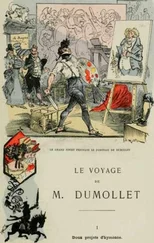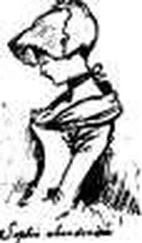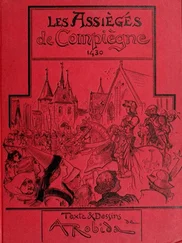Albert Robida - Yester-year; ten centuries of toilette from the French of A. Robida
Здесь есть возможность читать онлайн «Albert Robida - Yester-year; ten centuries of toilette from the French of A. Robida» весь текст электронной книги совершенно бесплатно (целиком полную версию без сокращений). В некоторых случаях можно слушать аудио, скачать через торрент в формате fb2 и присутствует краткое содержание. Жанр: Старинная литература, на английском языке. Описание произведения, (предисловие) а так же отзывы посетителей доступны на портале библиотеки ЛибКат.
- Название:Yester-year; ten centuries of toilette from the French of A. Robida
- Автор:
- Жанр:
- Год:неизвестен
- ISBN:нет данных
- Рейтинг книги:4 / 5. Голосов: 1
-
Избранное:Добавить в избранное
- Отзывы:
-
Ваша оценка:
- 80
- 1
- 2
- 3
- 4
- 5
Yester-year; ten centuries of toilette from the French of A. Robida: краткое содержание, описание и аннотация
Предлагаем к чтению аннотацию, описание, краткое содержание или предисловие (зависит от того, что написал сам автор книги «Yester-year; ten centuries of toilette from the French of A. Robida»). Если вы не нашли необходимую информацию о книге — напишите в комментариях, мы постараемся отыскать её.
Yester-year; ten centuries of toilette from the French of A. Robida — читать онлайн бесплатно полную книгу (весь текст) целиком
Ниже представлен текст книги, разбитый по страницам. Система сохранения места последней прочитанной страницы, позволяет с удобством читать онлайн бесплатно книгу «Yester-year; ten centuries of toilette from the French of A. Robida», без необходимости каждый раз заново искать на чём Вы остановились. Поставьте закладку, и сможете в любой момент перейти на страницу, на которой закончили чтение.
Интервал:
Закладка:
Under the ephemeral reign of Francis IL, with its passing glimpse of poor Marie Stuart, and her aureole of fate, and under that of Charles IX., costume was of a discreet and sober fashion. Men's doublets and women's bodices were slashed, like the stiff sleeves puffed at the top. The only articles of jewellery worn were the buckles and pendants of the gii'dles called 'cordelières,' the mounts of the ' aumônières,' and a necklace underneath the collar, which was a small fluted ruff, with cuffs of the same material.
In 1563 Chancellor de l'Hôpital, a declared foe to extravagantly wide farthingales, had succeeded in contracting and diminishino- them by a severe decree, which also interdicted the wearing of padded hose by men. But it came to pass that the King (Charles IX.) visited Toulouse, and the fair dames of that place petitioned him for a relaxation of the edicts of the stern Chancellor, whereupon the King,
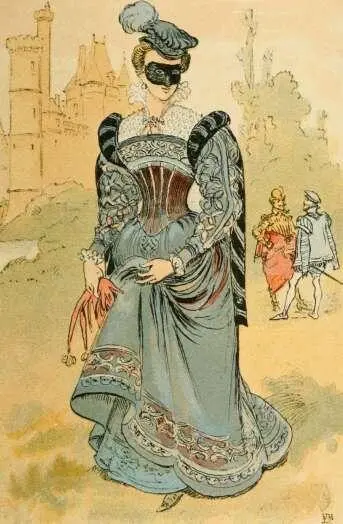
acting with greater clemency on this occasion than he afterwards did towards the Huguenots, pardoned the farthingale, and allowed it to resume its vast proportions.
We must not mock at the farthingale's circumference, for it saved France, if there be any truth in the chronicle that records how Marguerite de Valois rescued her husband Henry of Navarre from death, by hiding him under an immense farthingale, while the perpetrators of the massacre of St. Bartholomew were cutting to pieces with their halberts the unfortunate Huguenots who had been housed in the Louvre on the occasion of the wedding of the Béarnais and Margot.
The fashions became dull and sombre like the architecture and the furniture of the time, like everything indeed. This was a general law, architecture no longer displayed the overflowing luxuriance, the pagan gladness of the Renaissance, its forms became more staid. After a time of riot in tlie merriest inventions, architecture was doing penance. The furniture of the new and grim hôtels was stiff and clumsy. The square tables and chairs, without carving or any ornament, were made of rough wood covered with coarse stuff edged with big nails; in catafalque style.
The dwellers in these dull buildings, in apartments which seem to be hung with funeral trappings, were at this period personages clad in sad-coloured attire. Long gowns with high bodices were worn over wide
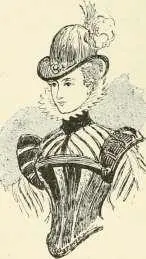
Under Charles IX.
farthingales, the bust was confined and compressed in a stiff busked corset, clasped at the back, worn over a bodice which was also stiffened and whaleboned.
Out of doors women wore light pattens, with cork soles, underneai-h their shoes : this had been a custom of previous times, but many were the jests passed upon ladies of short stature who perched themselves upon pattens of formidable height, or increased their inches by putting several soles to their shoes.
The head-dress of the period was either the coif with a net—the pointed front making the face heart-shaped—that we now know as ' the Mary Stuart' coif, or the black-velvet hood. The latter Avas not becoming.
It was 'bad form' for noble ladies, and indeed for the city dames also, to go out unmasked. The strange fashion of the mask was another note of gloom added to the already prevalent depression.
Masks, made of black velvet, were short, allowing the lower part of the face to be seen, or had chin-pieces ; they were fastened behind the ears, or kept on by a glass button held between the teeth, the latter was considered the more elegant method. The fashion of the mask passed on from the ladies of quality to the lower ranks of the bourgeoisie, and held its ground until the time of Louis XIII.
The mask was becoming and coquettish, not so the ' touret de nez,' a piece of black stuff attached b}»" the sides to the hood, and fixetl under the eyes, which hid all the lower part of the face. This odd invention resembled the yashmak of the Cairene women, but was more unsightly.
These nose-concealers had, it appears, a reasonable origin. Let us not lift them up. The ladies of that time painted outrageously, after a fashion which had come from Italy with Catherine de Médicis ; they simply daubed themselves like Caribs, and plastered their cheeks under the ' touret de nez ' with pigments which were very bad for the skin. The female face was covered with plasters of vermilion, or else, under pretext of preserving the freshness of the complexion, with ill-smelling pomades and drugs.
Horrible !
An " Instruction pour les jeunes dames " throws a light upon the composition of these 'ointments,' or rather deplorable messes, in which turpentine, lily-roots, honey, eggs, eggshells, camphor, etc., were mixed up, and the whole boiled in the inside of a pigeon, then mashed, and distilled together.
The ' touret de nez ' seem to have been indispensable after that.
René, the Florentine who was brought to France by Catherine, and maliciously styled " The Queen's Poisoner," supplied the fair court ladies with paints, perfumes, and cosmetics, besides concocting for the Queen-Mother the more deadly medicaments which she used for— in a manner at once discreet and refined—the suppression of troublesome persons.
What a time it was ! From one end of the kingdom to the other the strife of parties raged ; men hated, disputed with, and fought each other.
During a period of thirty years everything was confusion, the Catholic and Huguenot armies chased each other through the provinces, each in its turn sacking the towns, burning the castles, waging a merciless war in which neither women nor children were spared, a war of ambushes and massacre.
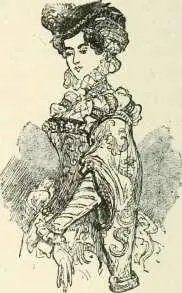
Stuff witli raised designs.
The towns were besieged, the country was ravaged by the Catholic ' argoulets ' and argue-busiers, and by the Protestant 'reiters/ castles and manors Avere carried by assault. They who were the weaker had to fly, or to perish.
It is ensy to see that in such a time as this the dress of womeu must ueccssarily assume a somewhat mascuhne chaiacter. In moments of peril the poor women were frequently forced to escape on horse or mule-back, sitting like men.
Condé, being surprised in an interval of peace (in 1568), and forced to fly from his castle of Noyers near Auxerre, and make for Rochelle in order to escape from Catherine's troops, was obliged to cross the Loire with his pregnant wife carried in a litter, three infants in the cradle, the families of Coligny and Andelot, and a number of children and nurses.
The women adopted a kind of doublet, with upper-hose, to be worn under the gown. These 'caleçons' (drawers), as they were called, enabled them to sit on men's saddles and use the stirrups more easily, notwithstanding their wide skirts.
In spite of everything, the farthingale flourished and increased in ma^rnitude.
" Et les clames ne sont pas bien accommodées Si leur vertugadin n'est large dix coudées."
We find tins couplet in a satire of the period, entitled Discours sur la mode.
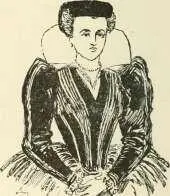
lu the time of ' the Reform.'
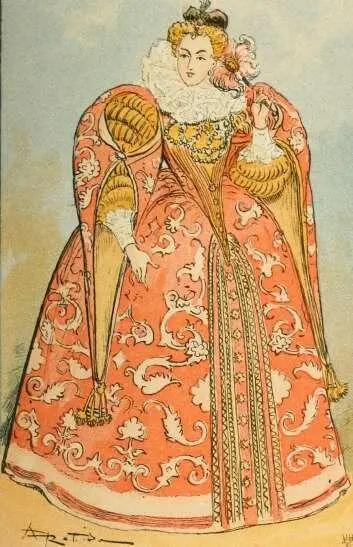
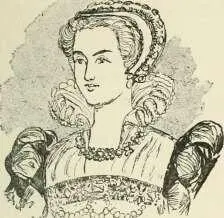
Интервал:
Закладка:
Похожие книги на «Yester-year; ten centuries of toilette from the French of A. Robida»
Представляем Вашему вниманию похожие книги на «Yester-year; ten centuries of toilette from the French of A. Robida» списком для выбора. Мы отобрали схожую по названию и смыслу литературу в надежде предоставить читателям больше вариантов отыскать новые, интересные, ещё непрочитанные произведения.
Обсуждение, отзывы о книге «Yester-year; ten centuries of toilette from the French of A. Robida» и просто собственные мнения читателей. Оставьте ваши комментарии, напишите, что Вы думаете о произведении, его смысле или главных героях. Укажите что конкретно понравилось, а что нет, и почему Вы так считаете.

